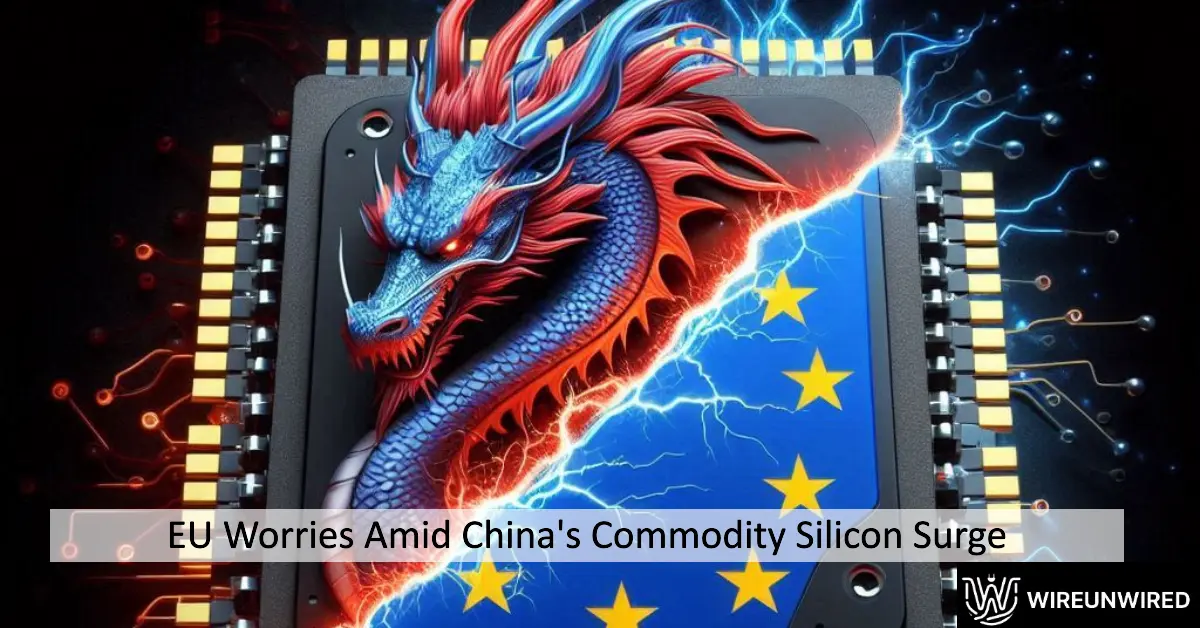As the electric vehicle (EV) revolution accelerates, Europe finds itself at a crossroads. While high-tech microchips have long been in the spotlight, a new concern is emerging: low-tech microchips. These unassuming components, often overlooked, are critical for EVs’ functionality. However, European manufacturers now face a formidable challenge from Chinese firms benefiting from subsidies. In this tech blog article, we delve into the dynamics of this shift and explore how Europe can maintain its competitive edge in the EV boom.
“We know there’s a massive subsidization of that industry on behalf of the Chinese government, which could lead to huge market distortion,” Raimondo, United States secretary of Commerce, said, estimating that China will produce around 60 percent of the legacy chips coming to the market in the “next handful of years.”
Europe is widening its focus from high-tech to low-tech microchips as it fears a fresh challenge from Chinese subsidized firms to supply the electric vehicle boom. According to reports, the Commission, the executive arm of the European Union, is probing its domestic semiconductor industry to learn its views on China’s expanding production of commodity silicon. The commission’s probe will be followed by two voluntary surveys due in September for the semiconductor industry and other major silicon- using industrial sectors such as construction and manufacturing.
Ever since China has ramped up its investment in its production capacity for legacy components, there has been a rise of concerns about silicon, globally. After Sanctions from US hindering China from accessing key semiconductor technologies, it is trying to become self reliant on semiconductor industry.
According to reports from The Register, China’s silicon production capacity will double withing 5- 7 years, which is good for the country’s domestic market. But it could spell trouble for global Chipmakers, if Chinese companies decide to sell these chips to a broader global market.
China’s ambitious plans include 32 new wafer fabrication plants, strategically positioned across the country. These fabs aim to bolster semiconductor production, catering to both domestic and global demand. The majority of these fabs prioritize mature nodes (28nm and beyond). While advanced nodes grab headlines, mature nodes remain essential for various applications.
Therein lies the potential for a market oversupply scenario in which chip prices plummet drastically. The result would be that Western manufacturers would leave, allowing Chinese companies to dominate the sector. This would leave the market at greater risk for disruptions such as export restrictions. The EU and U.S. may develop joint or cooperative measures to address dependencies or other distortionary effects.
“Both the European Union and the United States are committed to continuing to engage closely with the industry on the issue,” the Commission stated. However, the commission remains ambiguous on the measures the countries would take to address the distortionary due to these Chinese measures.
However, any action on these Chinese-made chips will only aggravate ties between the countries, which have already worsened due to high tariffs on EVs. The growing dilemma of the semiconductor workforce shortage is aggravating matters in both the EU and China, and it may have a substantial impact on the market in another negative way.
Discover more from WireUnwired Research
Subscribe to get the latest posts sent to your email.




You really make it seem so easy with your presentation but I find this topic to be actually something which I think I would never understand. It seems too complicated and extremely broad for me. I am looking forward for your next post, I will try to get the hang of it!
I think other website proprietors should take this web site as an model, very clean and great user friendly style and design, let alone the content. You’re an expert in this topic!